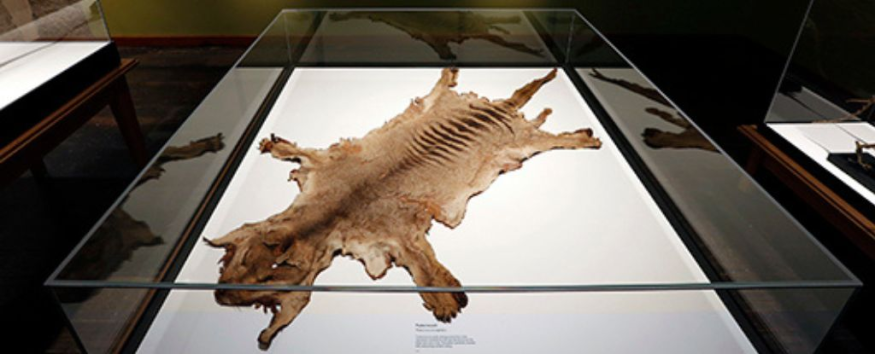Until recently, it was believed that the last Tasmanian tiger had died. In Tasmania, researchers discovered the animal's preserved pelt and skeleton in a museum cupboard. This large marsupial, more closely related to quolls and numbats, is striped like a tiger, with a body resembling that of a dog.
The Tasmanian tiger - or thylacine - is more closely related to quolls and numbats. It was once common throughout Australia to find pouched mammals, but their range had shrunk to Tasmania by the early 20th century.
Based on the new information, the remains of the last captive thylacine were accidentally included in an educational program teaching students about these long-lost animals' anatomy.
Flatten Fur in Museum
It is still possible to see flattened fur on parts of the specimen's skin where children rubbed it. In the 1980s, the body was stored away and promptly forgotten because no one realized what they were doing. A tragic life comes to an unfortunate end. After being illegally captured in May of 1936 by Elias Churchill, the older female thylacine was secretly sold to the now-closed Beaumaris Zoo in Hobart, where it died of exposure just a few months later.
No one understood at the time that this was to be the final Tasmanian tiger to grace a zoo. Indeed, records indicate that individuals still were searching for wild thylacines beyond 1936. Because of the prospect of discovering another survivor, the body of the last thylacine at Beaumaris Zoo was not commemorated or identified in any unique way.
Numerous museum curators, as well as scientists, search for its remains for years without success because no thylacine content dated back from 1936 had been documented in the zoological gathering, and it was supposed that its body had been discarded, according to Robert Paddle, a relative psychologist at Australian Catholic University.

Early Myths Made
Paddle with Kathryn Medlock, an emeritus curator at the Tasmanian Museum and Art Gallery (TMAG), discovered an unpublished report, which rekindled the treasure quest. The statement was recorded in the museum's taxidermist's 1936/1937 log, and it indicated that the thylacine which just died in 1936, the very last known surviving member of its type, had been presented to TMAG.
It wasn't located in the zoological part of the museum, where experts had previously looked for it. It was located within the education department of the museum. As per Medlock, the skin was meticulously tanned into a flat coat through the museum's taxidermist, William Cunningham, so that it could be readily transported and used as a display item for school students learning about Tasmanian marsupials.
Peddle and Medlock are indeed optimistic that their discoveries will finally dispel the misconceptions surrounding the very last Tasmanian tiger. Such myths have spread so extensively and blindly that they may even be found on the official websites of Australia's National Museum and the National Film and Sound Archive.
Each of these websites claims that the most recent Tasmanian tiger in confinement was a boy named Benjamin; however, Paddle informed ABC News that this is a persistent lie. Although a male thylacine was held in the Beaumaris Zoo in 1935, his moniker was not Benjamin, and he was not the last. That myth was made up by an individual who wasn't even employed at the zoo in the 1960s.
The Last Tasmanian Tiger
The male in Beaumaris wasn't the final confined thylacine, however, he was the last to be photographed. A 21-second black-and-white footage of a male Tassie tiger shot for a documentary in 1935 was just digitized and made available online. This male thylacine can be observed wandering in his tiny cage while ecstatic visitors rattle his cage in the video.
If one listens to the audio, one may hear a narrator state, "This is the only one in captivity in the world." But, if that assertion was accurate at the time, it wasn't for long. As per museum archives, the female thylacine acquired by Churchill entered the zoo immediately after 'Benjamin' had his cinematic debut, and she outlasted the man, as stated by Paddle.
While there were probably thylacines in the wild at the time, this was the sole one ever kept in a zoo. Hunting, combined with suspected illnesses and habitat damage as Europeans intruded on the animal's last bastion, is likely to have contributed to its eventual extinction across Tasmania. The remains of the last documented thylacine are currently on exhibit at TMAG for just about any interested visitors to witness. The study about Paddle and Medlock's re-discovery will be published soon on the Australian Zoologist site.
Check out more news and information on Tasmanian Tiger in Science Times.
© 2025 ScienceTimes.com All rights reserved. Do not reproduce without permission. The window to the world of Science Times.










